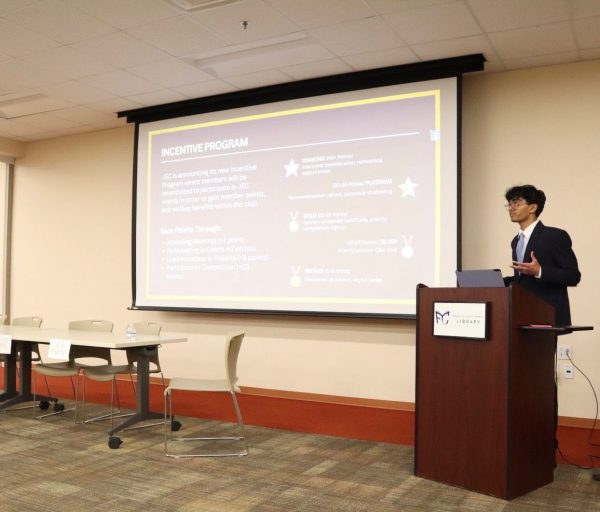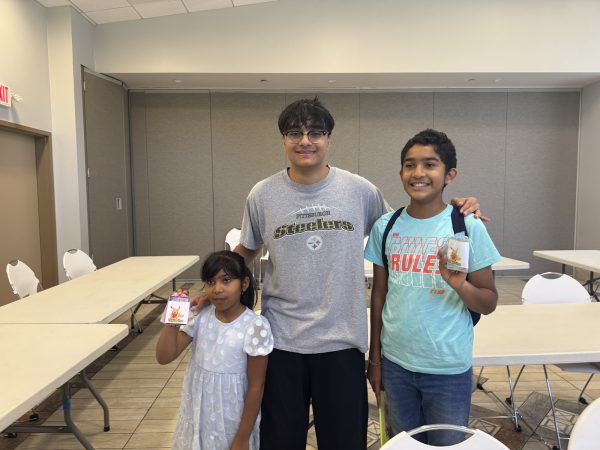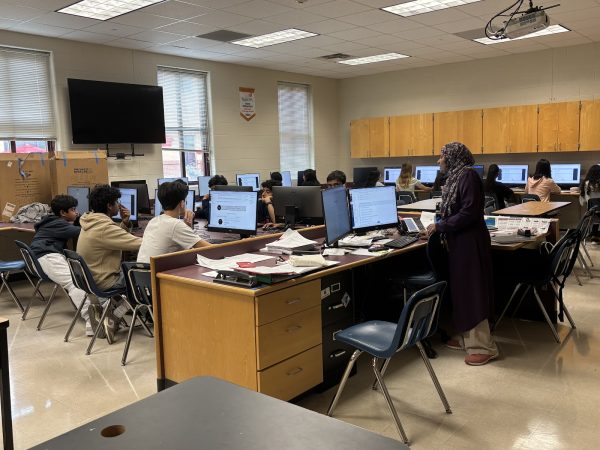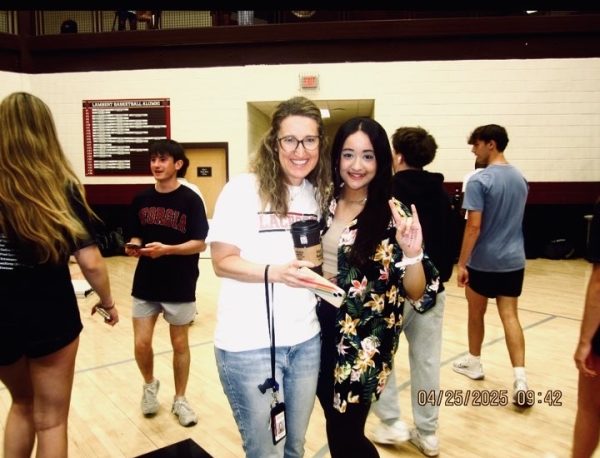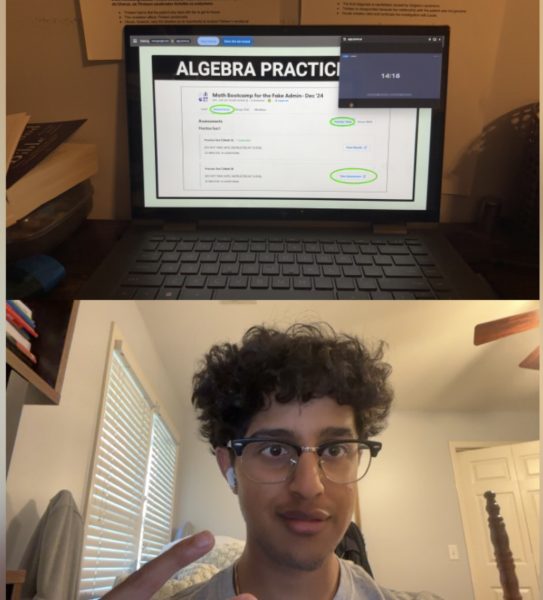Don’t be on the Fence
President of Fencing Club, Calla Lee, and club member, Alisa Vladimirova, discussed the basics of épée fencing and how tournaments operate.
The Lambert Fencing Team practices from August to February, and competing begins in September. The Lambert Fencing Team is part of the Georgia High School Fencing League with 50 members. The schools in this league use the épée sword, which has its own set of rules. Players can be hit on any area of the body. The players have a rigid mesh metal helmet and protective jacket, but there is no protection around the throat. Fencers are required to shake hands after a match. It is considered extremely disrespectful not to show this display of good sportsmanship.
Students take advantage of tournaments to reach letter qualification. Each tournament lasts six to seven hours at a time- beginning in the morning and ending mid-afternoon. At least one tournament is held every month, if not two. There are five or six preliminary matches, also known as bouts, per tournament, and six to seven groups of students. The players strive towards letter qualification. They must attend 80% of practices, regular-season tournaments, and finish in the top 16 players at one tournament.
“For the preliminaries, you go up to five points. You’ll be considered the winner of the preliminaries once you beat every single person,” Alisa expanded.
Points are earned when the tip of the épée touches a competitor, or when a double touch occurs within 40 milliseconds. If a player wins at least two matches, they move on to direct elimination. They are subsequently placed in brackets and must win 15 points to proceed to the next round. If a player loses direct elimination, they are out of the tournament. The system is often irritating to competitors.
“It’s frustrating when you’re in a direct elimination, and there’s someone you know you can beat that is 6 points ahead of you,” Alisa recalled.
Both types of matches utilize an electronic system built into the swords that keep track of points.
“The blades have a wire running through them and a button on the tip. When the button gets pushed down, a light goes up,” Calla divulged.
Competitions often become heated. The sport has designated black cards that disqualify the player from the current tournament and the next. The cards are typically employed for cases of bad sportsmanship and lose players their points and ranking.
To put their best foot forward during matches, the team trains weekly for two hours. The fencers condition for the first hour and have at it for the second. Bladework lasts from 20 to 25 minutes. They also line up for drill training to warm-up by working on stances. Practices also involve stretching, conditioning, and footwork. New players learn to remain upright while fencing. After joining the club, fencers choose between the French and the pistol grip. Pistol users are granted dexterity, whereas French users are apt for distance combat.
Calla had wished to try a combat sport and began fencing in the fall of 2017. Her daily practice equipped her to become President of the fencing club as a junior. As President, she leads stretches, cardio, and demonstrations alongside the coaches and offers pointers to competitors during bouts.
Alisa did not know fencing existed until 8th grade. A friend asked her to attend an interest meeting while they were at a pool party. Although her friend’s mother decided not to let her daughter join fencing, Alisa participated in the meeting and decided to give the sport a shot. Now a senior, she has been fencing for four years.
The team meets on Wednesdays from 4 to 6 p.m. in the cafeteria. We hope to see you next season!
Your donation will help support The Lambert Post, Lambert High Schools student-run newspaper! Your contribution will allow us to purchase equipment and cover website hosting costs.



